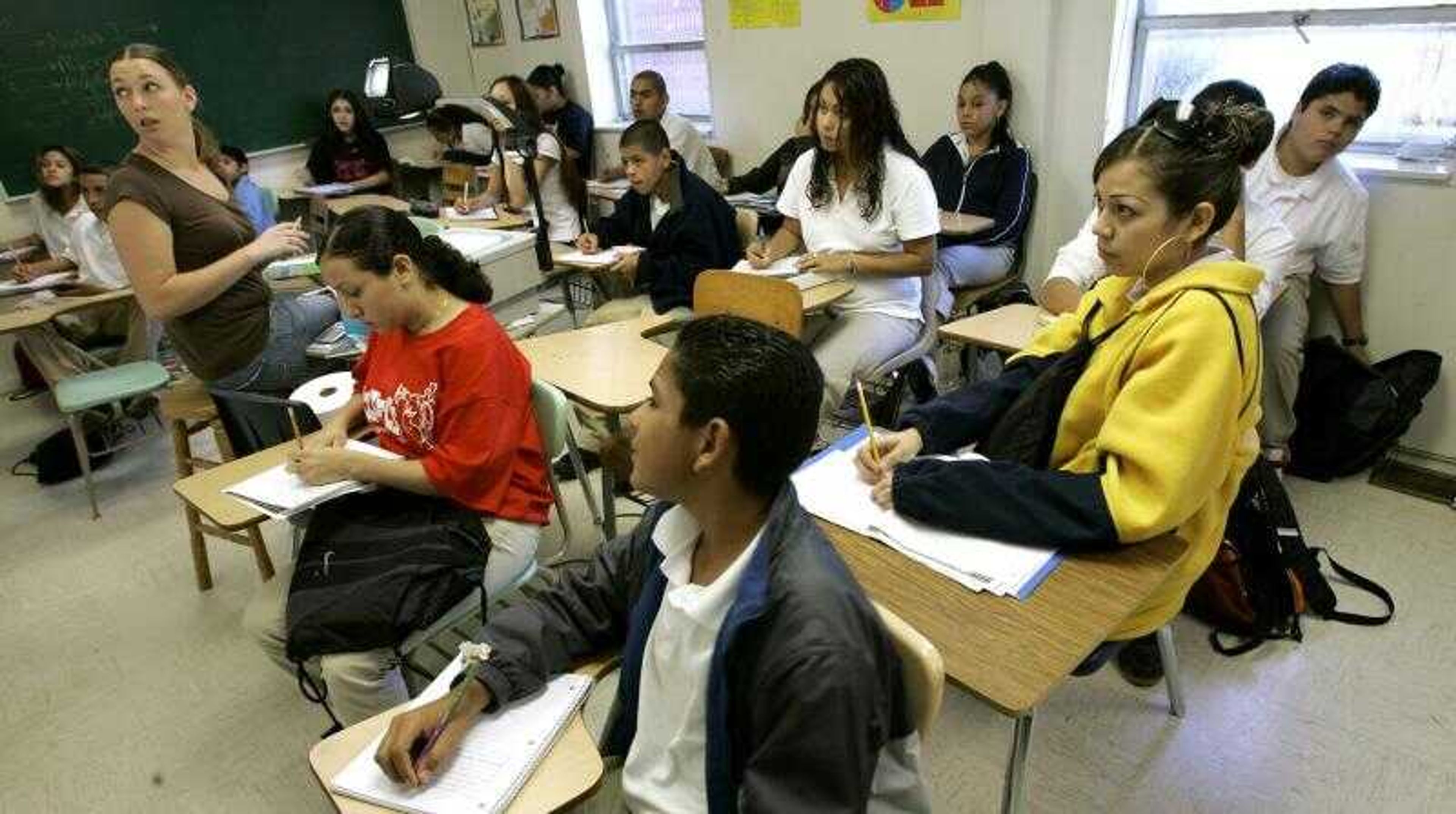Schools try to retain Hispanic students
KANSAS CITY, Mo. -- Jafet Carrasco doesn't know anyone who has been to college besides his teachers. He hears people talk about credit hours, but he's not sure what they are. And he knows college costs money, but not how much. But the 15-year-old knows he's going to college, and he's being encouraged by staff at the Alta Vista Charter School in Kansas City, part of a network of schools forming partnerships with colleges to ensure their Hispanic students obtain not just diplomas, but degrees...
KANSAS CITY, Mo. -- Jafet Carrasco doesn't know anyone who has been to college besides his teachers. He hears people talk about credit hours, but he's not sure what they are. And he knows college costs money, but not how much.
But the 15-year-old knows he's going to college, and he's being encouraged by staff at the Alta Vista Charter School in Kansas City, part of a network of schools forming partnerships with colleges to ensure their Hispanic students obtain not just diplomas, but degrees.
"Since no one went in my family, I want to be the first one," said Carrasco. "I want to have a good job when I grow up and a nice house and to provide for my family."
Carrasco's school and other affiliates of the National Council of La Raza, a Washington-based advocacy organization for Latinos, are trying to help their students avoid the pitfalls that leave about 40 percent of Hispanics without even a high school diploma.
Research shows Hispanics drop out of high school at higher rates and pursue college education at lower rates than most other racial groups. Only 12 percent of Hispanics have finished college, compared to 28 percent of whites and 18 percent of blacks, according to U.S. Census Bureau statistics from 2005, the most recent available.
Alta Vista, which as a charter school receives public funding but is freed from many of the rules and regulations that bind traditional public schools, has provided informal assistance for years to its graduates who needed help with their college coursework.
But this year it's doing something new, trying to ensure its 175 students -- many of them entering high school at the fifth-grade reading level -- graduate with at least some college credits.
From there, the school is working with staff at Kansas City's Penn Valley Community College to make sure students are academically prepared for college-level work. Alta Vista also plans to form partnerships to ensure its students transfer from the junior college to the University of Missouri campus in Kansas City or make the 50-mile drive to Central Missouri State University in Warrensburg.
Alta Vista will track the students throughout their academic journey and provide guidance. The effort eventually will include what is known as a 13th year -- a sort of bridge year when some students spend most of their time on college campuses and return to high school for tutoring.
"That's one of the things we have to do in the future. We have to develop a ninth year to 16th year system of making sure these kids go on," said Gilberto Guerrero Jr., associate director of the Guadalupe Center, the agency that originally sponsored Alta Vista. "That means setting up a lot of structures and partnerships that don't currently exist."
The school, which has an enrollment that is 91 percent Hispanic, chose the strategy because research shows most Hispanic high-schoolers who do continue their education start at junior colleges.
The school said the students need more help at the community-college level. Research suggests Hispanic students transfer to four-four institutions at lower rates than white and black students, said David Hawkins, director of public policy for the Alexandria, Va.-based National Association for College Admission Counseling.
Many Hispanics are the first in their families to attend college and must overcome big challenges, including language problems and a lack of federal financial aid if they aren't U.S. citizens.
"And also, some who were educated in their countries, they might not have the level of education you would expect of students educated in this country," said Hilda Crespo, vice president of public policy at the Washington-based ASPIRA Association, a Hispanic advocacy group focused on education and youth leadership development.
It's not uncommon for Hispanic youths who qualify for Pell grants, the main federal aid program for low-income students, to spend their first year in college taking remedial classes that don't move them closer to a degree, Crespo said.
But for those who graduate, job opportunities are abundant. Employers are eager to hire people who understand and can market products to the nation's growing number of Hispanics.
Cooperative agreements between high schools and colleges have been around for more than a decade but have gained momentum in recent years as the booming Hispanic population has gained more attention.
The Bill and Melinda Gates Foundation has contributed $7.4 million to help Alta Vista and other affiliates of the National Council of La Raza, which includes schools in Houston, Milwaukee, Wis., Washington, D.C, Pueblo, Colo., Los Angeles and New York.
"The challenge has always been to get them through high school," Guerrero said, "and then we've raised the bar so now our challenge is to get kids to think about college and also to prepare them."
Connect with the Southeast Missourian Newsroom:
For corrections to this story or other insights for the editor, click here. To submit a letter to the editor, click here. To learn about the Southeast Missourian’s AI Policy, click here.









